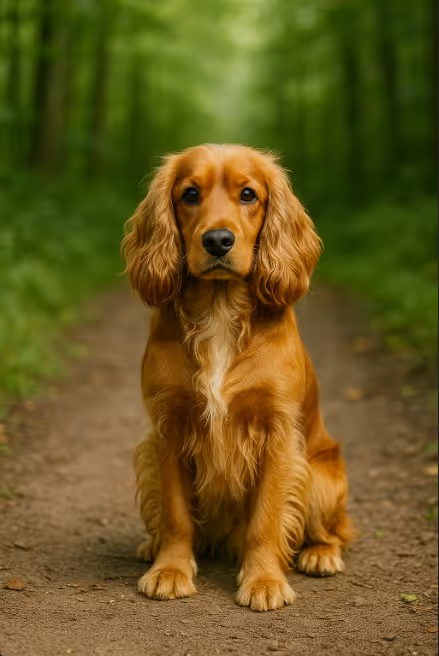The Cocker Spaniel is a joyful, affectionate, and beautiful companion dog known for its expressive eyes, silky coat, and gentle demeanor. Bred originally as a hunting dog, today’s Cocker Spaniel thrives in family homes, especially those that can provide regular grooming, playtime, and companionship. If you're wondering “Are Cocker Spaniels good apartment dogs?”—yes, they adapt well to smaller spaces as long as their exercise and social needs are met.

The Cocker Spaniel originated in Spain and was refined in England as a hunting dog used to flush woodcock—hence the name “Cocker.” In the late 19th century, the breed split into two distinct types: the American Cocker Spaniel, smaller and bred for companionship, and the English Cocker Spaniel, still focused on hunting. The American version rose to prominence in North America and was the most popular breed in the U.S. during the mid-20th century.
Cocker Spaniels are compact and elegant with long ears and a luxurious, flowing coat.
Regular grooming is essential to keep a Cocker Spaniel's coat healthy and tangle-free.
Cockers are moderately active and love to play.
Eager to please and intelligent, Cockers respond well to gentle, consistent training.
Provide high-quality food matched to their activity level and weight.
Cocker Spaniels are generally healthy with proper care but may develop certain conditions.
Work with reputable breeders or consider breed-specific rescues.
Are Cocker Spaniels good apartment dogs?
Yes—with daily walks and play, they adapt well to smaller spaces.
Do Cocker Spaniels shed?
Yes—moderately. Regular brushing helps manage loose hair.
Are Cocker Spaniels hypoallergenic?
No.
How often should a Cocker Spaniel be groomed?
Brushed daily, with professional grooming every 6–8 weeks.
Are Cockers good with kids?
Yes—gentle, playful, and affectionate, especially when socialized early.
Do Cocker Spaniels bark a lot?
They can be vocal. Training and stimulation help reduce nuisance barking.
Cocker Spaniel vs Cavalier King Charles Spaniel—what’s the difference?
Cockers are more active and require more grooming; Cavaliers are smaller and generally calmer.
Are Cockers prone to separation anxiety?
Yes. They bond closely with people—consider crate training and desensitization.
What are signs of ear infections in Cocker Spaniels?
Frequent head shaking, odor, redness, or scratching—routine cleaning is essential.